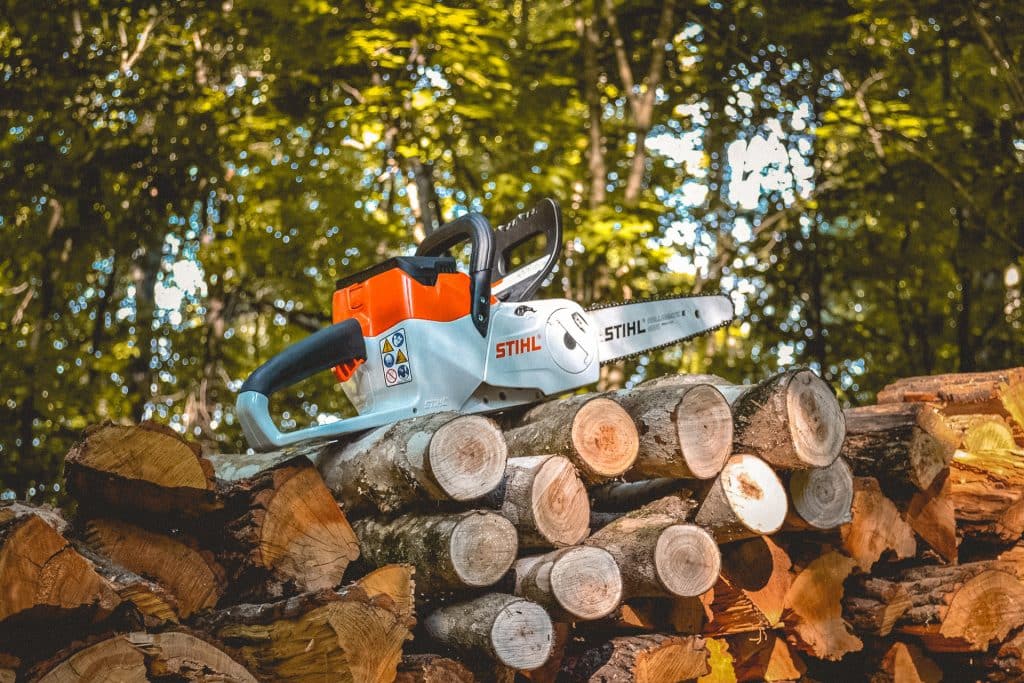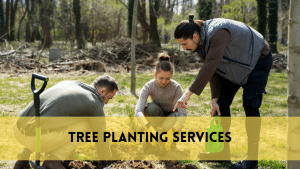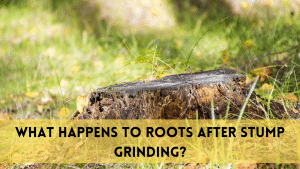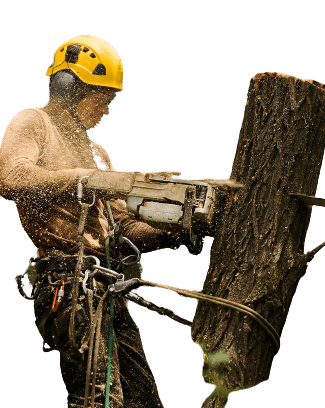Planting trees in areas where stumps have been removed is a transformative act of renewal and growth. This process comes with unique challenges and considerations.
In this guide, we’ll delve into the intricacies of planting trees in such locations, exploring the necessary steps, tools, and precautions for success. In this artical we will learn about plant a tree where the stump was removed.
The Stump Removal Process
When a tree is cut down, the remaining stump can impede the growth of new vegetation in several ways:
- Physical Obstacle: Stumps can physically obstruct the planting of a new tree by taking up space and making it challenging to dig a proper planting hole.
- Competing Roots: The stump’s remaining roots can compete with the new tree’s roots for nutrients and water.
- Decomposition: As the stump decays, it can release substances harmful to other plants, inhibiting their growth.
How soon after stump grinding can you plant?
The timing for planting after stump grinding depends on several factors, including the size of the stump,
Stump Size: Smaller stumps with fewer remaining roots and wood remnants will require less time for decomposition.
Soil Condition: If the soil in the area is compacted by the grinding process (such as debris left behind), it may need more time for natural decomposition and recovery.
Stump Removal Depth: The depth to which the stump was ground can impact the timeline. Deeper grinding may expedite decomposition and reduce the waiting period.
Best tools to plant trees:
- Shovel: A good-quality shovel is a fundamental tool for digging the planting hole.
- Mattock: These are useful for breaking up compacted soil. They can help improve soil aeration and drainage.
- Root Barrier: If the stump’s roots are still in the soil. A root barrier is used to prevent them from interfering with the new tree’s roots.
- Soil Test Kit: Testing the soil’s pH and nutrient levels is crucial to ensure it is suitable for the tree you plan to plant. Adjustments can be made based on the test results to create the optimal growing environment.
- Mulch and Mulching Tools: Mulch helps retain moisture, regulate soil temperature, and suppress weed growth.
Can we Plant a Tree where a Stump was Removed?
The ability to plant a new tree in the exact spot where a stump was removed depends on various factors:
1. Stump Removal Method:
- The method used to remove the stump plays a significant role. If the stump was entirely ground out, leaving no remaining wood, roots, or debris, it’s generally easier to plant a new tree.
2. Soil Condition:
- The condition of the soil after stump removal is vital. If the soil is compacted or contaminated by chemicals used in the removal process, it may not be suitable for immediate planting.
3. Stump Size:
- Smaller stumps are easier to remove entirely, making it more feasible to plant a new tree in the same spot.
4. Tree Selection:
- Choosing the right tree species is essential. Some trees are more resilient and adaptable to challenging soil conditions than others.
Key steps
While it’s technically possible to plant a tree where a stump was removed, the ideal approach involves a few key steps:
- Complete Stump Removal: Ensure that the stump is entirely removed, including all roots and debris. This creates a clean slate for planting.
- Soil Improvement: Assess the soil quality and, if necessary, amend it with organic matter to improve its fertility and structure.
- Species Selection: Choose a tree species that is well-suited to the soil and environmental conditions of the area.
- Proper Planting: Follow best practices for tree planting, including digging a spacious planting hole, providing adequate moisture, and mulching to conserve moisture and suppress weed growth.
- Regular Care: After planting, maintain proper care and monitor the new tree’s growth to ensure it establishes itself successfully.
Benefits
- Environmental Restoration: It helps restore the natural ecosystem by reintroducing native or appropriate tree species.
- Enhanced Aesthetics: Trees beautify the landscape, adding visual appeal to your property or community.
- Carbon Sequestration: Trees absorb carbon dioxide from the atmosphere, mitigating climate change.
- Wildlife Habitat: Trees provide habitat and food for various wildlife species, promoting biodiversity.
- Shade and Cooling: Trees offer shade, reducing energy consumption for cooling and providing a comfortable outdoor environment.
- Property Value: Well-maintained trees can increase property values and curb appeal.
- Educational Opportunities: Tree planting initiatives offer educational opportunities for individuals and communities to learn about ecology and sustainability.
- Erosion Control: Tree roots help stabilize soil, preventing erosion in vulnerable areas.
Conclusion
In a flourishing conclusion, the process of planting a tree where a stump once stood unfolds as a remarkable journey of renewal and vitality. By meticulously removing the stump, selecting the right tree, and nurturing the soil, you orchestrate a symphony of growth. With patience, care, and a touch of nature’s magic, you breathe life into a once-barren spot, creating a vibrant legacy of greenery. This endeavor is not merely about planting a tree; it’s about sculpting a future where life, beauty, and sustainability flourish.




